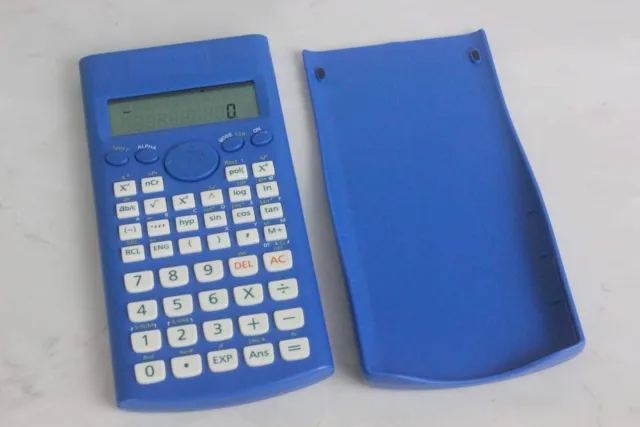Beyond Basic Math: Exploring Advanced Tech Calculator Soup – In the ever-evolving landscape of technology, calculators have undergone a remarkable transformation. What once were simple devices for basic arithmetic have evolved into sophisticated tools capable of handling complex mathematical functions, data analysis, and programming tasks. This article delves into the realm of advanced tech calculators, exploring their capabilities, features, and the myriad ways they empower users to tackle intricate calculations with ease.
Evolution of Tech Calculators
Gone are the days when calculators were limited to performing basic arithmetic operations. The evolution of technology has given rise to advanced calculators equipped with powerful processors, expansive memory, and a plethora of specialized functions. From scientific calculators designed for engineers and scientists to graphing calculators used in education and finance, these devices have become indispensable tools in various fields.
Features and Capabilities
Advanced tech calculators boast an array of features that extend far beyond basic math. These include:
- Graphing Capabilities: Graphing calculators allow users to visualize mathematical functions through graphs and plots. This feature is invaluable in fields such as calculus, physics, and engineering, where graphical representations aid in understanding complex relationships.
- Statistical Analysis: Advanced calculators come equipped with statistical functions for analyzing data sets, performing regression analysis, calculating probabilities, and more. Students and professionals alike rely on these tools for tasks ranging from hypothesis testing to predictive modeling.
- Programming Functionality: Many calculators support programming languages such as TI-BASIC, allowing users to create custom programs and automate repetitive tasks. This opens up a world of possibilities for educators, students, and enthusiasts interested in exploring computational concepts and algorithms.
- Symbolic Computation: Some calculators offer symbolic computation capabilities, enabling users to manipulate mathematical expressions, solve equations, and perform algebraic operations symbolically. This feature is particularly useful in advanced mathematics and engineering disciplines.
- Data Visualization: In addition to graphing, advanced calculators may support 3D graphing, matrix operations, and dynamic geometry, providing users with powerful visualization tools for exploring mathematical concepts in depth.
Applications in Education
Advanced tech calculators play a crucial role in education, empowering students to engage with mathematical concepts in a dynamic and interactive manner. Whether in high school mathematics classrooms or university lecture halls, these devices facilitate learning and problem-solving across a wide range of subjects:
- STEM Education: In science, technology, engineering, and mathematics (STEM) education, graphing calculators are indispensable tools for visualizing functions, analyzing data, and solving complex problems. From algebra and trigonometry to calculus and physics, these devices support hands-on exploration and experimentation.
- Standardized Testing: Many standardized tests, such as the SAT, ACT, and AP exams, allow students to use approved graphing calculators during testing. Familiarity with these devices is therefore essential for success on these assessments, making calculator proficiency a valuable skill for students preparing for college admissions and advanced placement exams.
- Advanced Courses: In advanced mathematics courses at the high school and college levels, students encounter increasingly complex concepts that require the computational power and functionality of advanced calculators. Whether studying differential equations, linear algebra, or multivariable calculus, students benefit from the ability to visualize, analyze, and solve problems using these tools.
Professional Applications
Beyond the classroom, advanced tech calculators find applications in various professional fields, where they serve as indispensable tools for analysis, problem-solving, and decision-making:
- Engineering: Engineers rely on graphing calculators for tasks such as analyzing structural designs, performing numerical simulations, and optimizing engineering systems. From civil engineering to aerospace engineering, these devices support engineers in designing, testing, and validating solutions to real-world problems.
- Finance: In the world of finance, graphing calculators are used for financial modeling, investment analysis, and risk management. Professionals in banking, investment management, and corporate finance leverage these tools to perform complex calculations, evaluate investment strategies, and make informed decisions in dynamic markets.
- Science and Research: Scientists and researchers across disciplines use advanced calculators for data analysis, statistical modeling, and computational simulations. Whether studying biological systems, conducting experiments in physics, or analyzing environmental data, researchers rely on these tools to process, interpret, and visualize complex datasets.
Conclusion
Advanced tech calculators have revolutionized the way we approach mathematics, empowering students, educators, and professionals alike to tackle complex problems with confidence and precision. From graphing functions and analyzing data to programming algorithms and solving equations, these devices serve as versatile tools for exploration, discovery, and innovation across a wide range of disciplines. As technology continues to advance, the capabilities of these calculators will only expand, further enriching our understanding of mathematics and its applications in the modern world.

